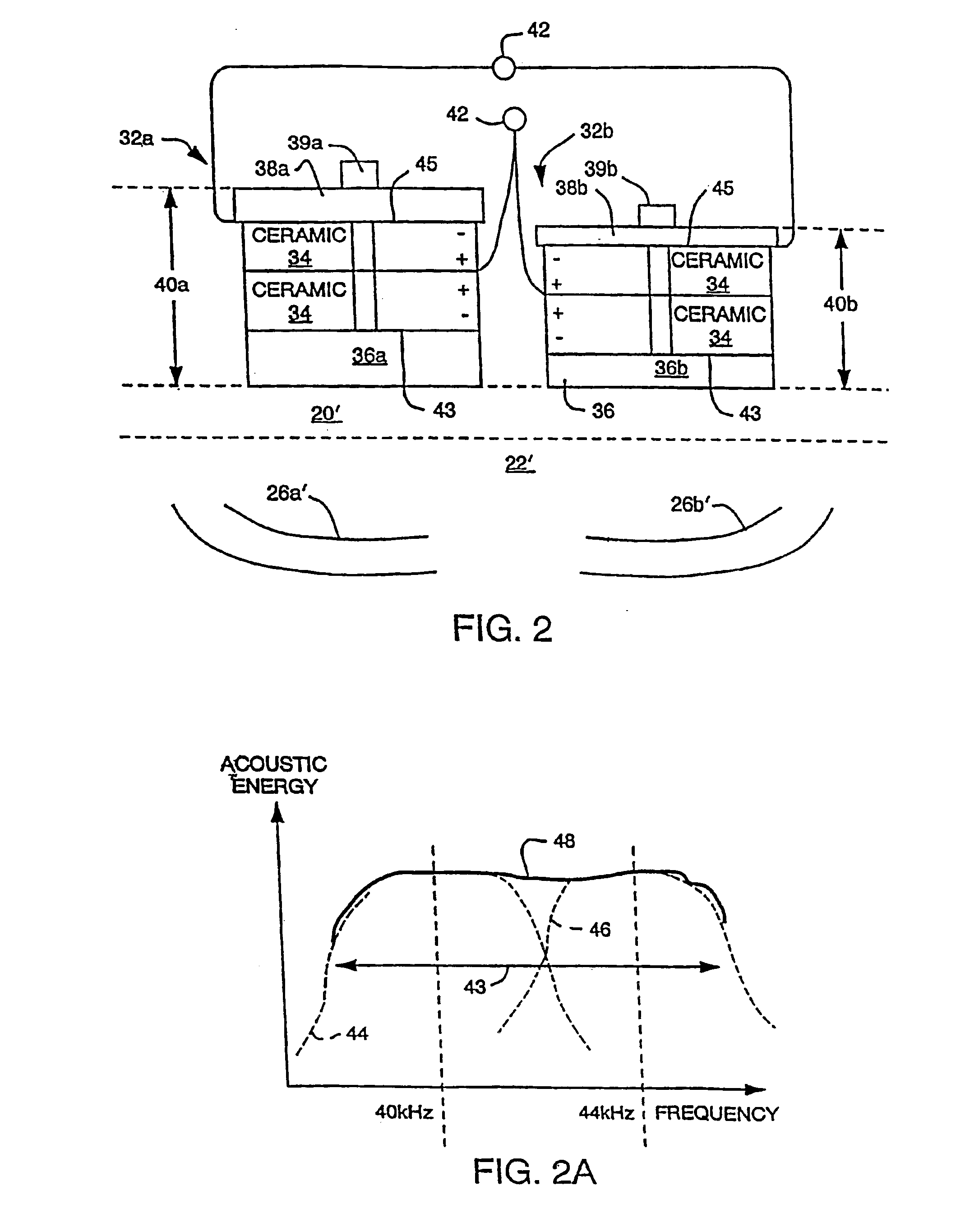Apparatus and methods for cleaning and/or processing delicate parts
a technology for delicate parts and apparatus, applied in the direction of mechanical vibration separation, instruments, energy-based chemical/physical/physico-chemical processes, etc., can solve the problems of easy damage to fragile parts, extremely small features of semiconductor wafers, etc., and achieve the effect of reducing damage to delicate parts
- Summary
- Abstract
- Description
- Claims
- Application Information
AI Technical Summary
Benefits of technology
Problems solved by technology
Method used
Image
Examples
Embodiment Construction
[0139]FIGS. 1 and 1A show schematic side and top views, respectively, of an ultrasound processing system 10 constructed according to the invention. An ultrasonic generator 12 electrically connects, via electrical paths 14a, 14b, to an ultrasound transducer 16 to drive the transducer 16 at ultrasound frequencies above about 18 khz, and usually between 40 khz and 350 khz. Though not required, the transducer 16 is shown in FIG. 1 as an array of transducer elements 18. Typically, such elements 18 are made from ceramic, piezoelectric, or magnetostrictive materials which expand and contract with applied voltages or current to create ultrasound. The transducer 16 is mounted to the bottom, to the sides, or within the ultrasound treatment tank 20 through conventional methods, such as known to those skilled in the art and as described above. A liquid 22 fills the tank to a level sufficient to cover the delicate part 24 to be processed and / or cleaned. In operation, the generator 12 drives the ...
PUM
 Login to View More
Login to View More Abstract
Description
Claims
Application Information
 Login to View More
Login to View More - R&D
- Intellectual Property
- Life Sciences
- Materials
- Tech Scout
- Unparalleled Data Quality
- Higher Quality Content
- 60% Fewer Hallucinations
Browse by: Latest US Patents, China's latest patents, Technical Efficacy Thesaurus, Application Domain, Technology Topic, Popular Technical Reports.
© 2025 PatSnap. All rights reserved.Legal|Privacy policy|Modern Slavery Act Transparency Statement|Sitemap|About US| Contact US: help@patsnap.com



